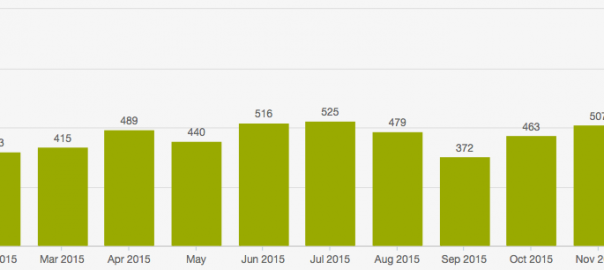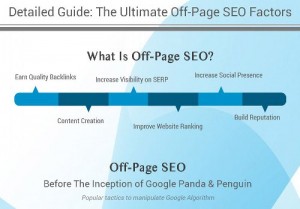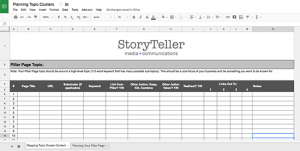
Search engine optimization (SEO) has suffered a strange fate in recent years. Many, if not most, of us consider SEO to be an old-school marketing tactic that’s been replaced by content marketing. Today’s mantra goes something like this: Publish it and they will come. Of course, what you publish, where and how are the big challenges to “getting over the hump” with all kinds of content marketing, but often lost in the shuffle are the basics of optimizing your content for organic search. How did we get here, and what should we do about it?
Houston, We Have a Problem
For me, the journey started with one of the many hats I wear. I serve as the Strategist on several of Kuno’s client accounts. My job as Strategist is not only to drive marketing strategy forward, but also to look backward and analyze results. How are we doing, and how can we improve? For one of my accounts, a small professional services firm, I noticed a significant drop-off in organic search traffic and leads. We don’t often see this, because in most of our engagements, we are creating and publishing targeted blog posts and premium content on a regular basis. In recent years, the thinking has been that if you build and maintain a sustained flow of good, shared content that’s relevant to your buyers, Google rewards you with high visibility in similar searches. We were certainly doing that in this account, so I asked myself, “What the hell is going on?”

So I started thinking. Is this yet another Google algorithm change at work? Is it content shock? Is someone else beating us to the punch? None of those elements seemed to be at work here. What else could it be? Then I thought, what if we go back to basics and take a look at SEO?
Performing an SEO Audit
I had to knock the rust off my SEO skill set first, but after a quick look at our client’s website and blog post page titles, meta descriptions and content it became clear—we had drifted away from the foundations of SEO, keyword strategy and on-page optimization. We had in fact forgotten about organic search in our content strategy, and it showed.
So what’s the big deal?
According to the Earnest Agency, 81 percent of B2B purchase cycles start with Web search and 90 percent of buyers say when they are ready to buy, “they’ll find you.”
From our own client data, 46 percent of all traffic, 30 percent of leads and 46 percent of all customers come from organic search. Yeah, it’s a big deal.
Getting back to our client, I wanted to know just how bad the situation was, so I renewed my MozTools subscription and dove in to get the full analysis. There are plenty of other good SEO toolkits, like SEMRush and RavenTools, but I’m a huge fan of Moz and Rand Fishkin, so there you go. … Lo and behold, we had all kinds of problems with the Google index (crawler errors), things like:
- Serious errors, like missing pages (404s), duplicate page content and missing page titles
- Medium-priority errors like duplicate page titles and meta descriptions or too-long page titles and descriptions
- No tracked keywords in any of the on-page elements and URLs
- Incomplete optimization of keywords across all of the on-page elements and URLs
It was clear that if we once had a keyword strategy, it had long since gone by the wayside in lieu of topics and content that, while relevant, had no apparent intent to attract searchers with commonly used search phrases.
Picking the Low-Hanging Fruit
What to do about the results of the SEO audit? Well, in this case the low-hanging fruit was to fix the Google index first. So we did a quick content audit of the website doing a site search on Google. Then we identified pages that belonged (or that should be redirected to new live pages) and those that were just old garbage that should be removed from the index. We redirected the “good” pages to their new counterparts using HubSpot’s URL Mapping tool and removed the “bad” pages using the Remove URLs tool in Google Webmaster Tools.
Next, we repaired all pages with missing on-page elements and reduced the length of “too-long” page elements.
A bit more challenging were the pages with duplicate content. In many cases, these index errors resulted from blog listing pages, with URLs that included parameters like “?page=2” or “?author=john+mctigue.” In these cases, we added canonical tags to the listing pages pointing back to the main blog page. In other cases there were additional arguments like query parameters that Google was treating as separate pages. Here, we filtered these out of the index using the URL Parameters tool in Google Webmaster tools. This is the kind of detective work you may need to do to clean up the Google index. In subsequent crawls, you should see these errors start to diminish rapidly.
Returning to SEO Keyword Strategy
One of the misconceptions marketers have is that keywords don’t matter anymore. It’s true that the way we approach keywords has changed over the years. SEO is no longer about ranking on high volume, broad match, short-tail keywords. Today, we want to anticipate exactly which phrases buyers will use to find us and create optimized pages for those phrases that match the searcher’s intent and cause them to stick around and consume more content. That’s the end game for Google. To find those phrases we need to interview buyers, analyze current traffic and do some keyword research using tools like Webmaster Tools and AdWords Keyword Tool.
So, that’s what we did with our client. In fact we completely reorganized the website and added pages to flesh out our refreshed keyword strategy. Then we went back and re-optimized the blog posts. If you do change page or blog post URLs (as opposed to creating new ones), don’t forget to redirect the old ones to the new ones!
After just a couple of months of repairs and re-indexing, take a look at the results.

Clearly, we’ve turned things around significantly in a short period of time, and we’ve only done SEO 101-level updates. There’s more to do, and we are working on some additional technical SEO tactics now.
How Did We Get Here?
The client case I’ve described is far from an isolated incident. I’m sure most of you will find similar issues if you aren’t constantly optimizing your site and focusing on organic search strategy. We are addressing other clients’ SEO challenges as we speak. If you haven’t done an SEO audit in a while, I highly recommend you start now.
What’s happened is that in our excitement about content marketing and the apparent rewards Google gives to consistently high-quality content, we forgot to read between the lines. Nearly all content marketing thought leaders have written about this topic and included stern warnings in their posts about neglecting the fundamentals of keyword strategy and technical SEO. Those warnings are easy to ignore, as they are usually listed as caveats near the end of an article. Or maybe marketers choose to read only the exciting headlines and ignore the details. Either way, the myth has propagated in recent years that publishing great content alone yields success in organic search.
Make no mistake, you do need to create great content that aligns with your buyers’ needs. You need to distribute that content with owned, earned and paid channels to activate its engagement. But you also need to think about the search process and pay attention to SEO.
So, yes, what’s old is new again. SEO is the new SEO. Enjoy the ride!
Digital & Social Articles on Business 2 Community(103)








